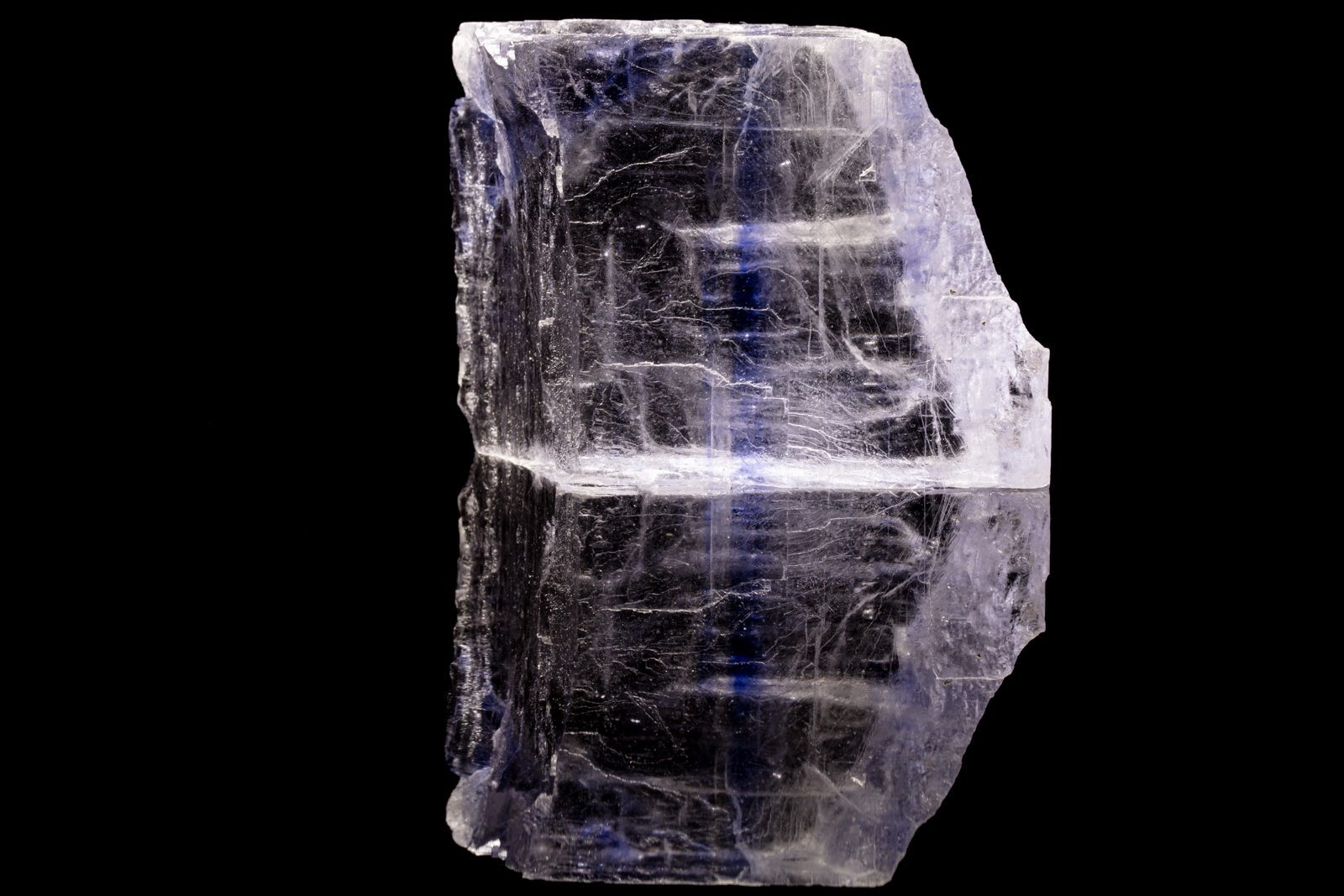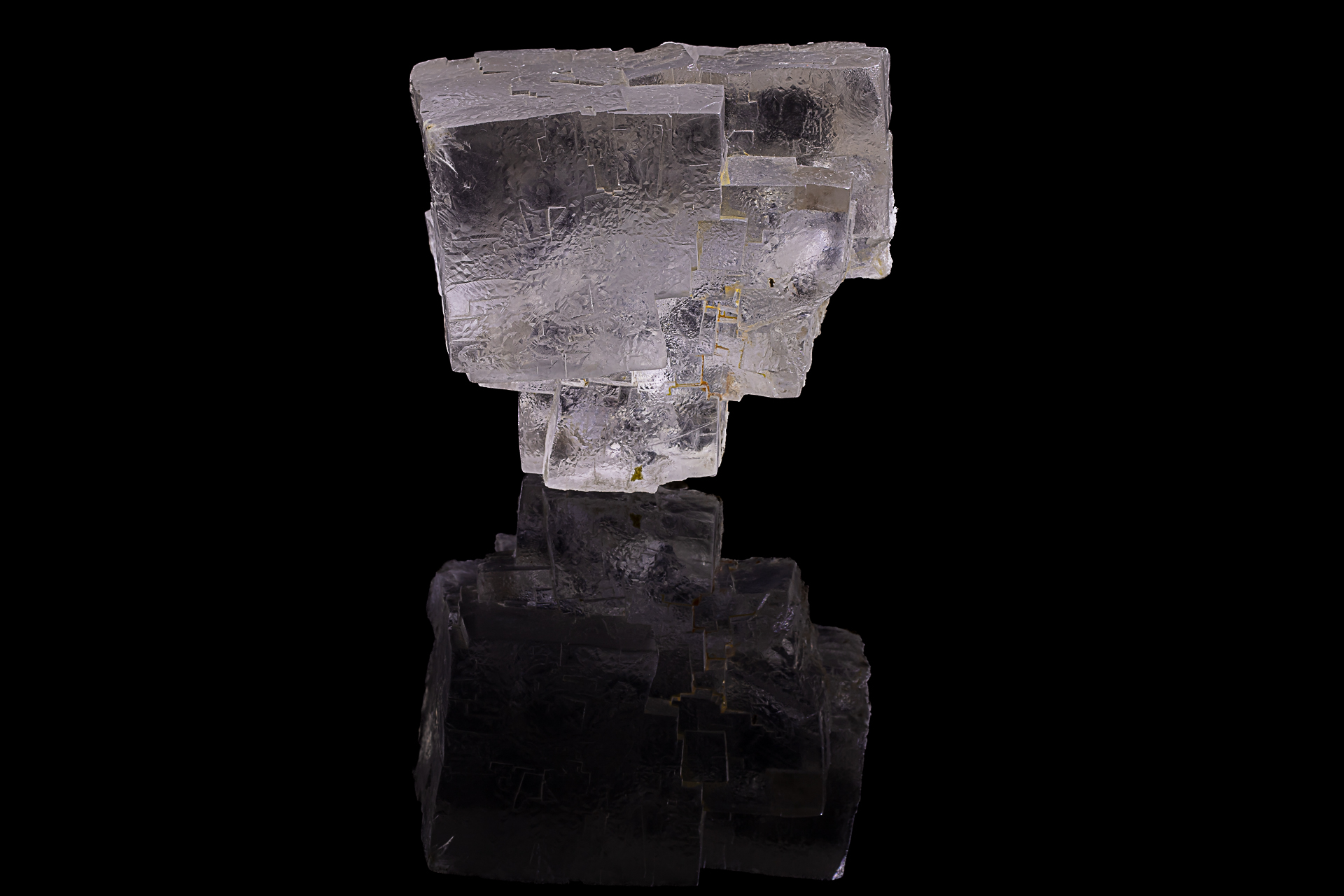Halite
Formula: NaCl
Species: Halides
Colour: Colourless, whitish, yellow, red, purple, green or blue
Lustre: Vitreous
Hardness: 2½
Specific Gravity: 2.168
Crystal System: Isometric. Its crystals are usually cubes but sometimes it forms “hopper” crystals where the outer edges of the cube faces have grown more rapidly than their centers, leaving cavernous faces.
Member of: halite group
Name: From the Greek άλς, sea, for halites, later modified by J.D. Dana to halite.
Natural sodium chloride (also named rocksalt; water-soluble). Occurs both as evaporite deposits in saline lakes and watercourses, or as bedded sedimentary deposits, or as salt domes. The blue colour comes from metal Na nanoparticles, 2.5–3 nm in diameter. Similar nanoparticles impart red colour to villiaumite.
Besides its culinary use, salt is a preservative and source of sodium carbonate (soda ash), used in the manufacture of soap and glass, and sodium bicarbonate (baking soda). It is als used as a flux for the melting of metals, as a glaze for porcelain enamels, and as a source of chlorine for hydrochloric acid and other chlorine compounds particularly PVC.

 Copyright Charles Camarda - www.camardavisualstudio.com
Copyright Charles Camarda - www.camardavisualstudio.com Copyright Charles Camarda - www.camardavisualstudio.com
Copyright Charles Camarda - www.camardavisualstudio.com